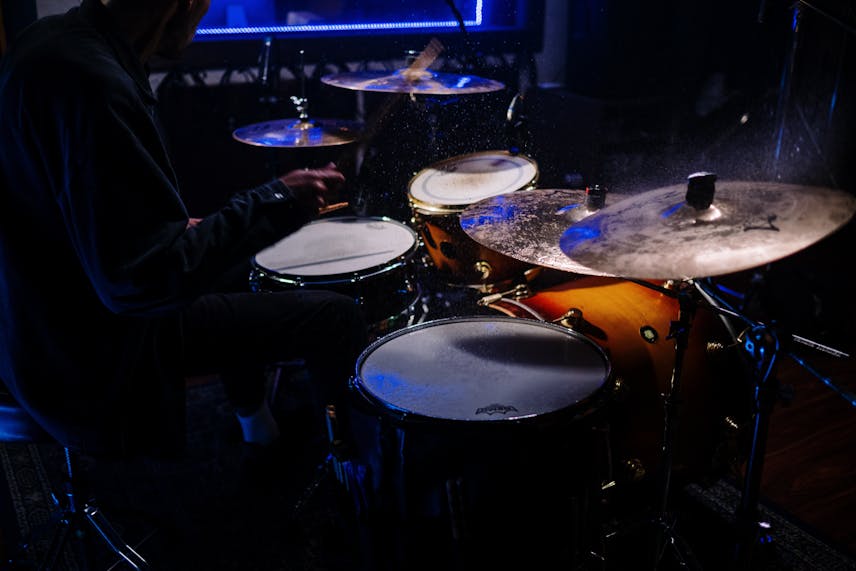When it comes to creating the laid-back, soul-soothing beats of LoFi music, the role of drums cannot be overstated. Drums for LoFi are not just a rhythmic backbone but also a conduit for conveying the genre’s characteristic nostalgic and intimate feel. Understanding how to craft and integrate these percussive elements is essential for any producer looking to make their mark in the LoFi scene.
Embracing the LoFi Drum Aesthetic
The essence of LoFi drums lies in their imperfect and organic nature. Unlike many genres where crisp, clean drum samples are the norm, LoFi embraces the quirks and subtleties that come with vintage gear or lower fidelity recordings. This means seeking out or creating drum sounds that have a bit of crackle, hiss, or even the odd timing fluctuation.
Producers often lean towards samples from old soul, jazz, and funk records, where the drums have a natural warmth that resonates with the LoFi ethos. These samples can then be further processed to enhance their vintage charm, using techniques like bit-crushing, applying vinyl emulation plugins, or recording to tape.
Choosing the Right Drum Sounds
Selecting the right drum kit is pivotal. Kick drums should have a muffled, deep tone, while snares can range from tight, crisp snaps to more spacious, resonant claps. Hi-hats and cymbals are typically softer and less intrusive, often sounding as if they’re being played in a room next door.
Layering is another technique used to give LoFi drums their unique character. By stacking different drum sounds together, producers can create a richer, more textured beat. For instance, layering a snare with a hand clap or a shaker can add depth and interest.
Programming LoFi Drum Patterns
The rhythmic patterns in LoFi music often draw from hip-hop, with a laid-back, off-kilter swing that gives the genre its head-nodding quality. When programming your drum patterns, it’s important to focus on creating a groove that feels relaxed and unquantized. This can be achieved by slightly nudging drum hits off the grid or using a swing function in your DAW.
It’s also common to find syncopation in LoFi drum patterns, where the emphasis is placed on the off-beats or weaker beats in the measure. This adds to the looser, more laid-back vibe of the music.
Adding Texture and Layers
Texture plays a crucial role in the overall sound of LoFi drums. Producers often incorporate ambient noise, like the sound of rain, vinyl crackle, or street noise, to create an atmosphere that transports the listener to another place and time. This can be done by layering these sounds underneath the drum pattern or by weaving them in and out of the beat.
Moreover, percussive elements such as tambourines, shakers, and rimshots are used sparingly to add variety and interest throughout the track. These should complement the main drum elements without overwhelming them.
Processing and Effects
To truly capture the LoFi sound, drums often undergo substantial processing. EQ is used to roll off high frequencies and boost the lows, giving the drums a softer, more rounded sound. Compression is applied generously to glue the drum elements together and to bring out the nuances of the sampled drum sounds.
Reverb and delay are used with a light touch to prevent the drums from sounding too sharp or digital. Instead, the goal is to create a sense of space and timelessness that is synonymous with LoFi music.
Mixing and Balancing LoFi Drums
In the mixing stage, balance is key. LoFi drums should not overpower the melodic elements but rather serve as a foundation that supports the overall vibe of the track. Panning individual drum elements can create a sense of width and movement, making the beat more engaging to the listener.
Sidechain compression is also a popular technique in LoFi music, where the kick drum is used to slightly duck the volume of other instruments like the bass or keyboard pads. This not only creates a more cohesive mix but also adds to the pulsating, rhythmic feel of the track.
Ultimately, the integration of drums in LoFi music is as much about feeling as it is about technique. It’s about capturing a moment in time, an emotion, or a memory, and translating that into sound. With the right approach to drum selection, patterning, and processing, producers can create beats that are not just heard but felt.
Remember, the hallmark of a great LoFi drum track is its ability to transport the listener to a place of relaxation and contemplation, all while keeping the head bobbing to the beat.


